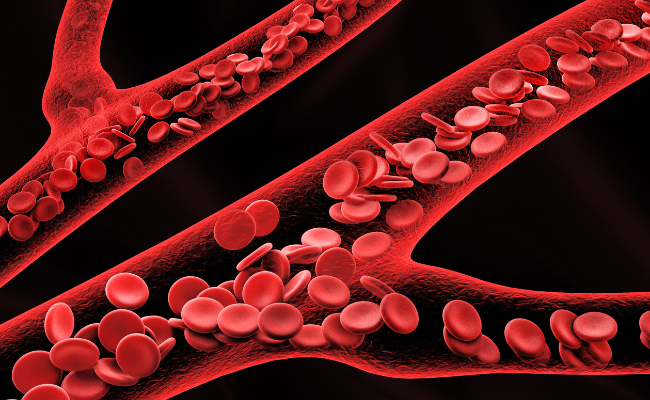How to Treat Diamond Blackfan Anemia?
- October 11, 2023
- No Comments

What is Diamond Blackfan Anemia (DBA)?
Diamond Blackfan Anemia (DBA) stands as an infrequent and congenital manifestation of pure red cell aplasia, marked by the incapacity of the bone marrow to generate a sufficient quantity of red blood cells. This condition typically manifests within the inaugural year of life, showcasing itself as severe anemia. Diverging from other forms of anemia, DBA predominantly impacts the production of red blood cells, resulting in a deficit of these crucial cells responsible for transporting oxygen to tissues throughout the body.
It represents an exceptionally rare hematologic disorder that disrupts the generation of red blood cells within the bone marrow. The genesis of this genetic condition lies in mutations or alterations within specific genes. DBA emerges as a chronic affliction, demanding continual medical attention and enduring support throughout the affected individual's lifetime. Those grappling with Diamond-Blackfan anemia necessitate sustained, lifelong care to effectively manage and navigate the complexities posed by this genetic blood disorder.
Why is Diamond Blackfan Anemia a Concern?
DBA poses significant health challenges due to the critical role red blood cells play in oxygen transport. Insufficient red blood cells can result in fatigue, weakness, and an increased susceptibility to infections. Additionally, individuals with DBA may experience growth retardation and physical abnormalities. The condition is often diagnosed early in life, requiring long-term management and careful monitoring to mitigate its impact on overall health.
How is Diamond Blackfan Anemia Diagnosed?
Diagnosing DBA involves a combination of clinical assessments, blood tests, and bone marrow examinations. Typically, a blood count will reveal a low number of red blood cells, and further investigations, including bone marrow biopsies, help confirm the diagnosis and exclude other potential causes of anemia. Genetic testing may also be conducted to identify specific mutations associated with DBA.
Treatment Solutions for Diamond Blackfan Anemia:
Corticosteroids:
- One of the primary treatments for DBA involves the use of corticosteroids, such as prednisone or prednisolone.
- These medications stimulate the production of red blood cells in the bone marrow, helping to alleviate anemia.
- However, long-term use of corticosteroids may have side effects, and not all individuals with DBA respond favorably to this treatment.
Blood Transfusions:
- In cases where corticosteroids are ineffective or not well-tolerated, regular blood transfusions become a crucial component of DBA management.
- Transfusions provide the necessary red blood cells to address anemia and improve overall well-being.
- However, repeated transfusions can lead to complications such as iron overload, necessitating additional interventions.
Stem Cell Transplantation:
- For individuals with DBA who do not respond to conventional treatments, stem cell transplantation (also known as bone marrow transplantation) may be considered.
- This involves replacing the defective bone marrow with healthy stem cells, typically from a compatible donor.
- While this procedure can be curative, finding a suitable donor and managing potential complications are significant challenges.
Gene Therapy:
- Emerging research in gene therapy holds promise for treating DBA at its root cause—the genetic mutations responsible for the condition.
- By correcting or replacing the faulty genes, gene therapy aims to restore normal red blood cell production.
- However, this approach is still in the experimental stage, and its long-term effectiveness and safety are under investigation.
Benefits of Treatment for Diamond Blackfan Anemia:
- Improved Quality of Life: Effective management of DBA, whether through corticosteroids, transfusions, or other interventions, can significantly enhance the quality of life for affected individuals. Addressing anemia helps alleviate symptoms such as fatigue and weakness, allowing individuals to engage more fully in daily activities.
- Prevention of Complications: Timely and appropriate treatment reduces the risk of complications associated with DBA, such as infections and developmental issues. Blood transfusions, in particular, play a crucial role in preventing severe anemia-related complications.
- Enhanced Growth and Development: Children with DBA may experience growth delays and physical abnormalities. Adequate and targeted treatment supports normal growth and development, minimizing the impact of DBA on a child's overall health and well-being.
- Potential for Cure with Transplantation: Stem cell transplantation offers the potential for a cure in some cases of DBA. By replacing the defective bone marrow with healthy donor cells, this procedure aims to restore normal blood cell production, providing a long-term solution for individuals with DBA.
- Hope through Research and Gene Therapy: Ongoing research, particularly in the field of gene therapy, offers hope for more targeted and sustainable treatments for DBA. Innovations in understanding the genetic basis of the condition pave the way for future interventions that could address the root cause of DBA, potentially leading to more effective and less invasive treatments.
Comments (0)